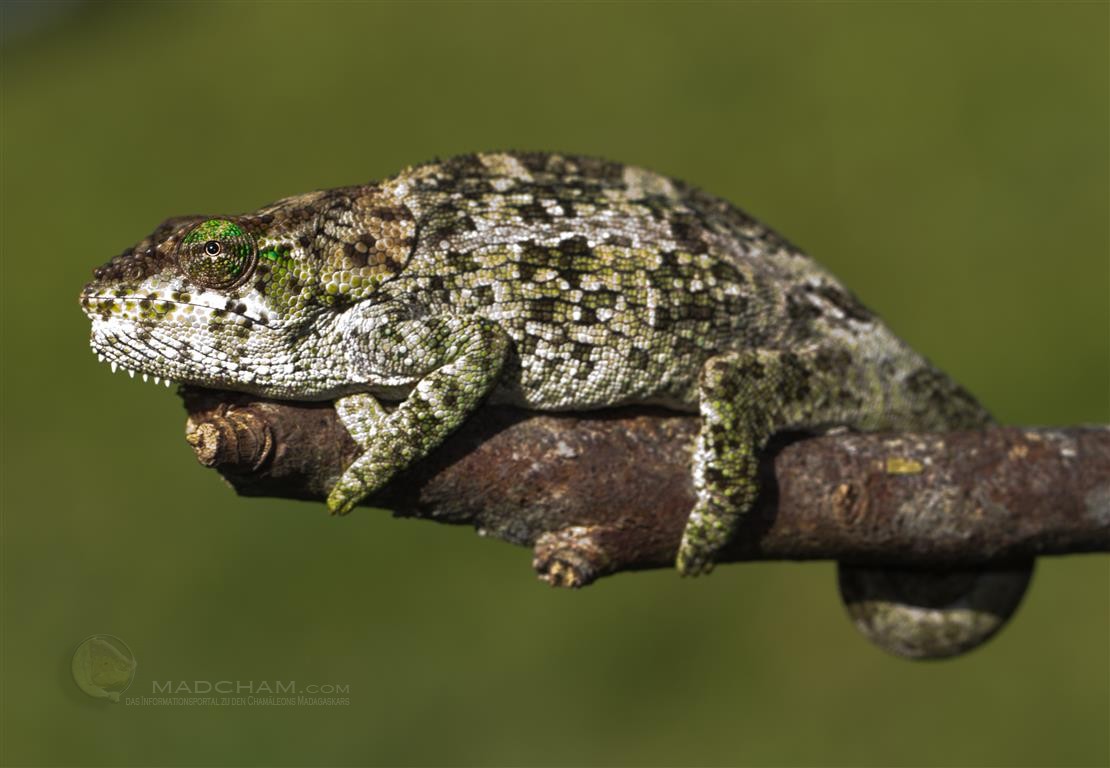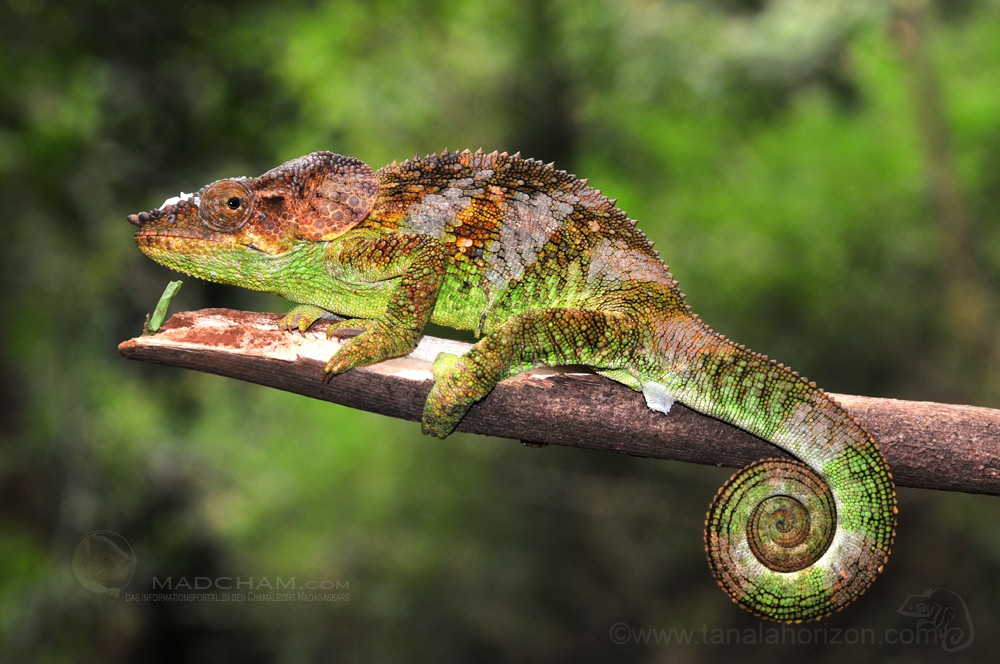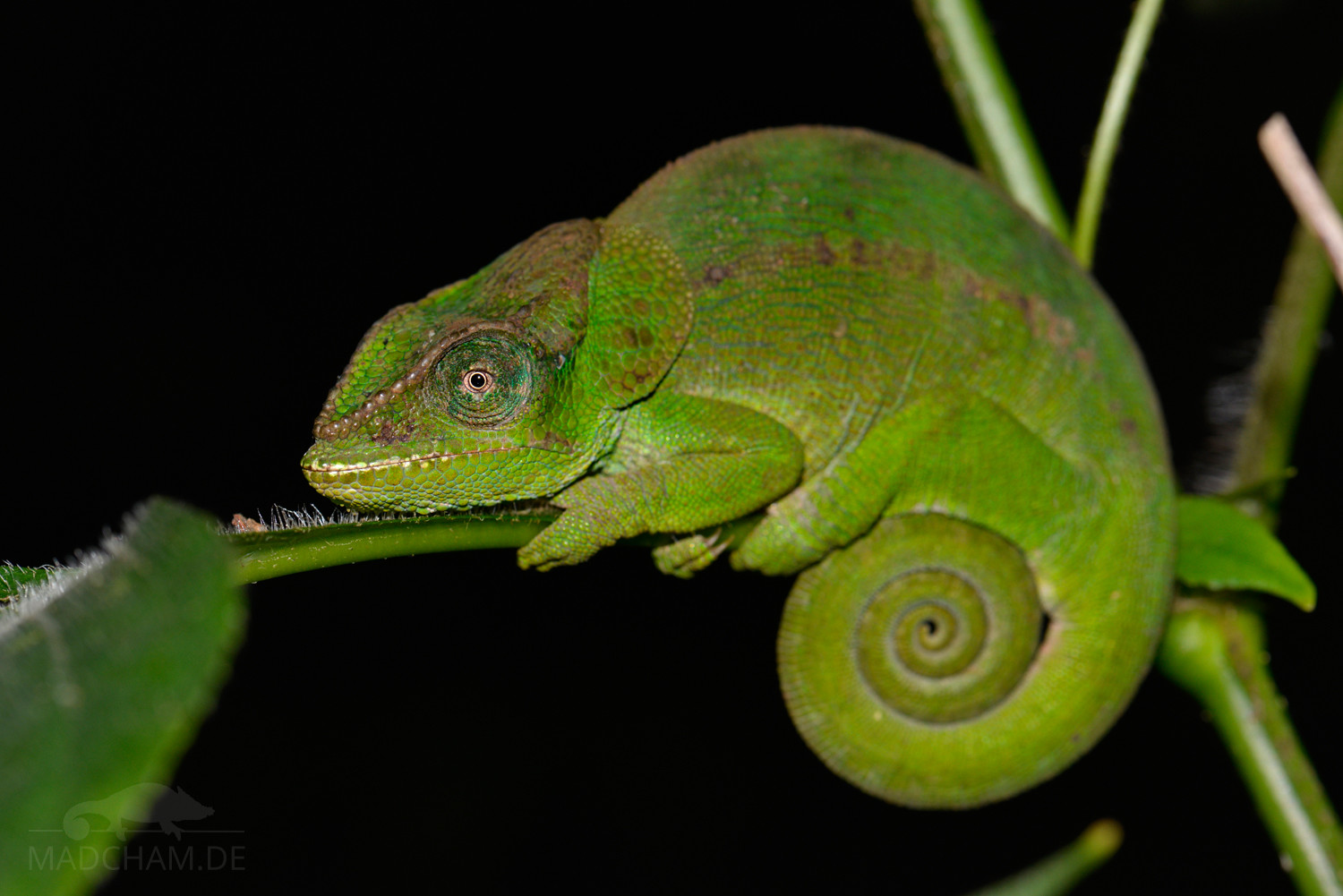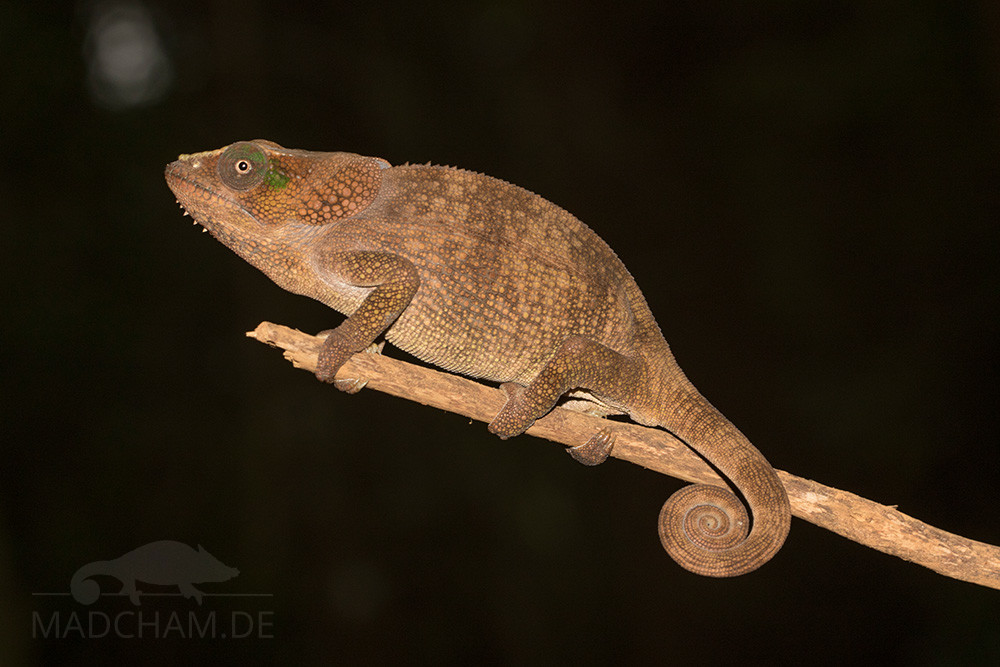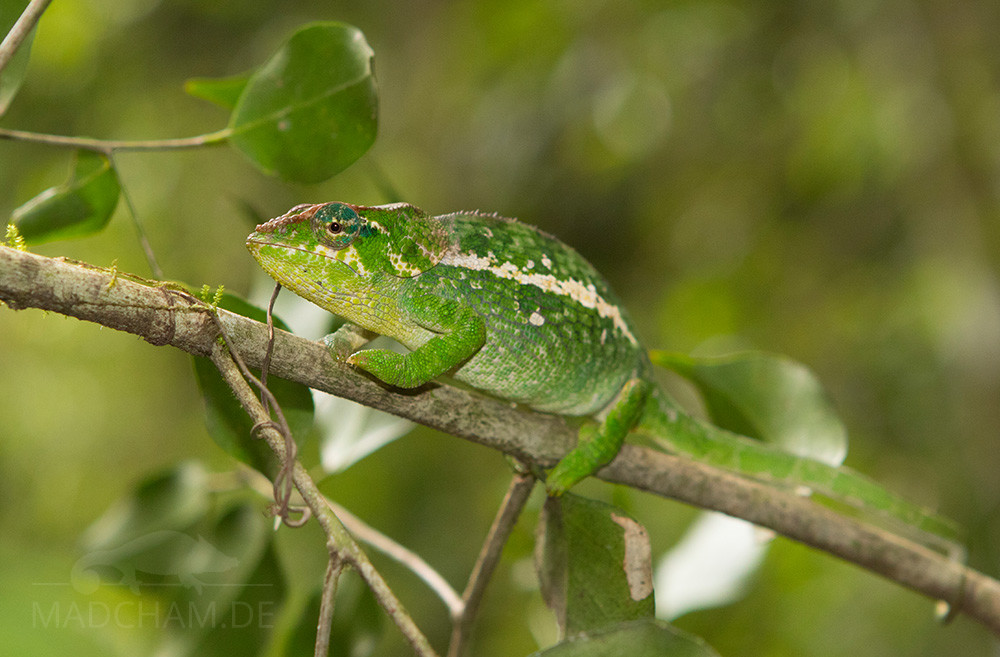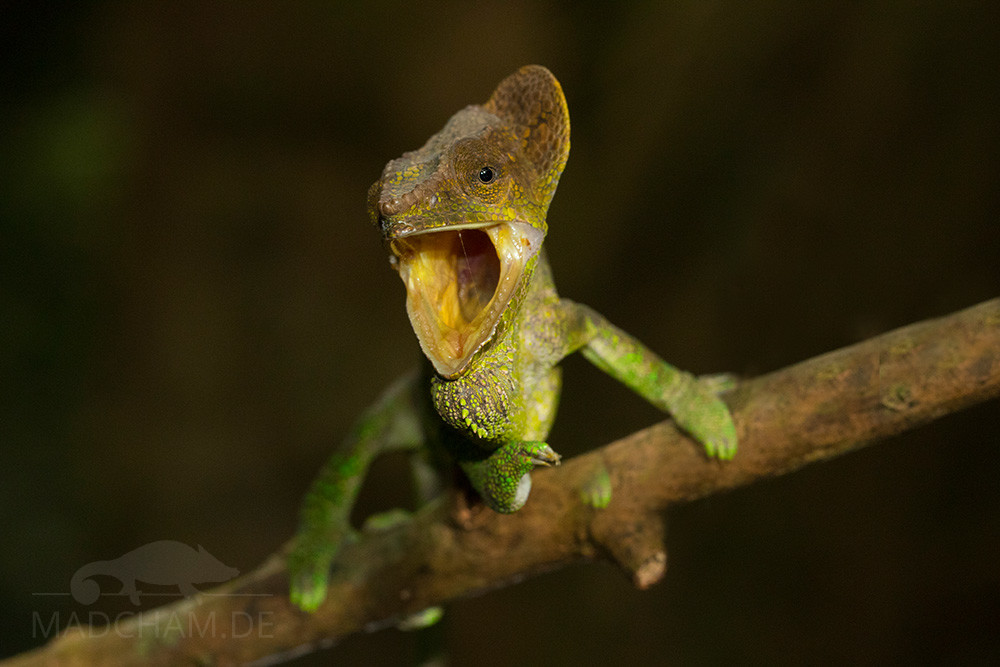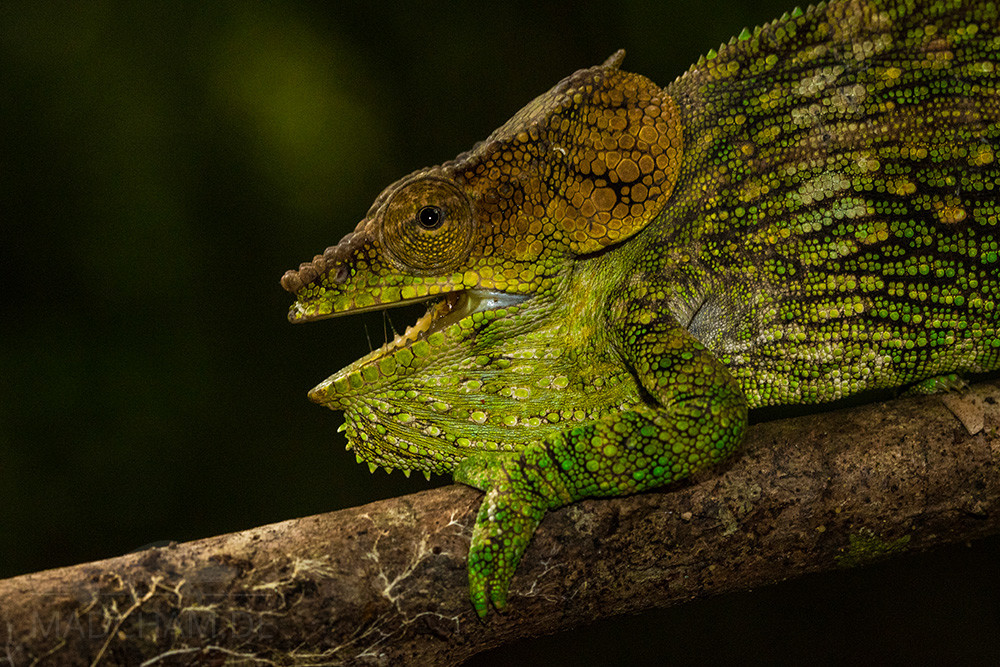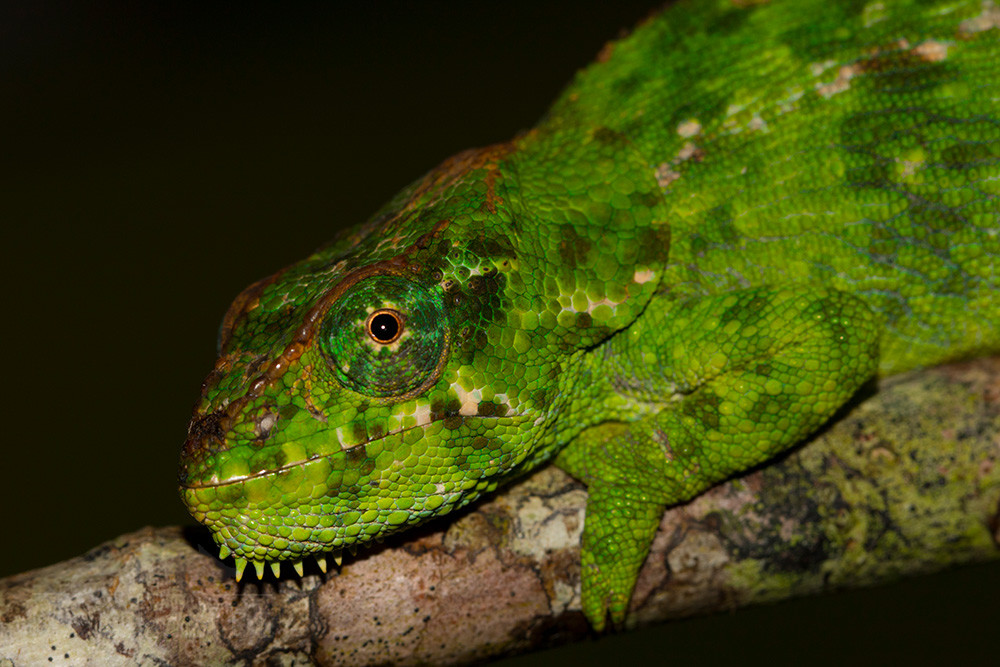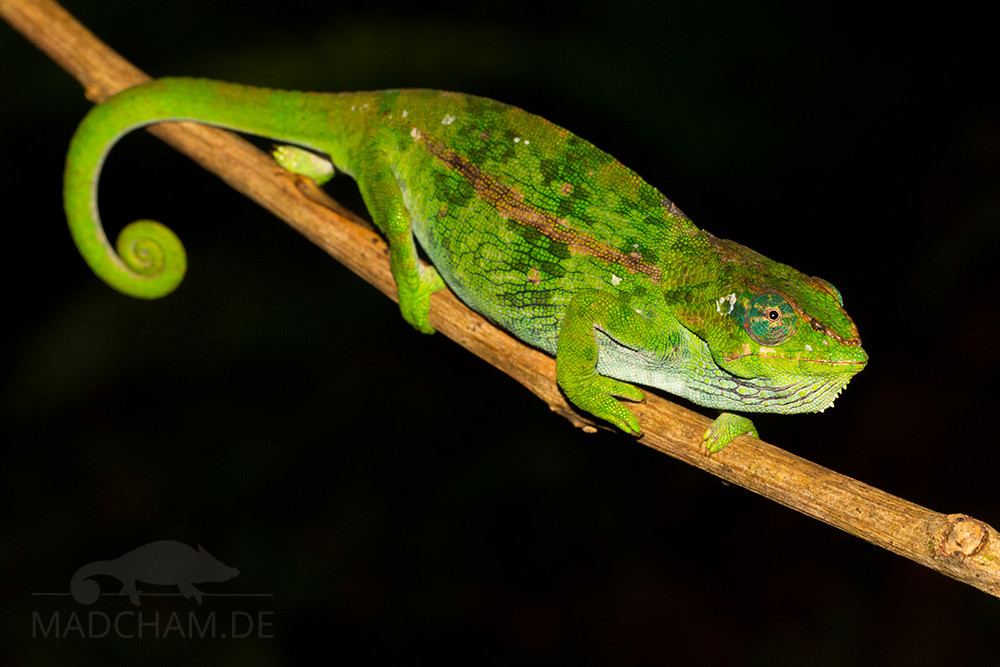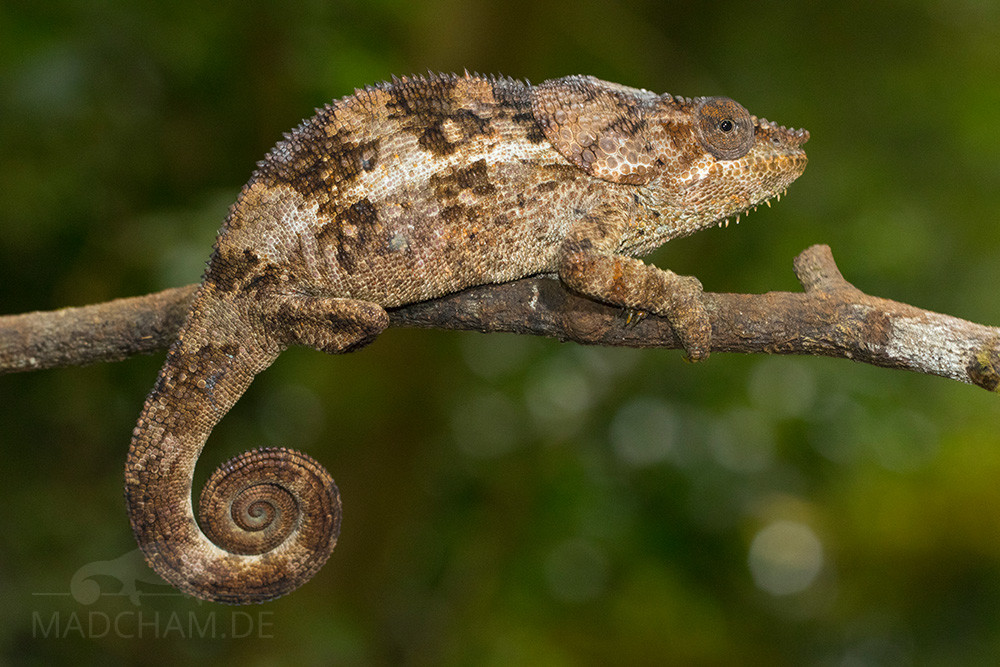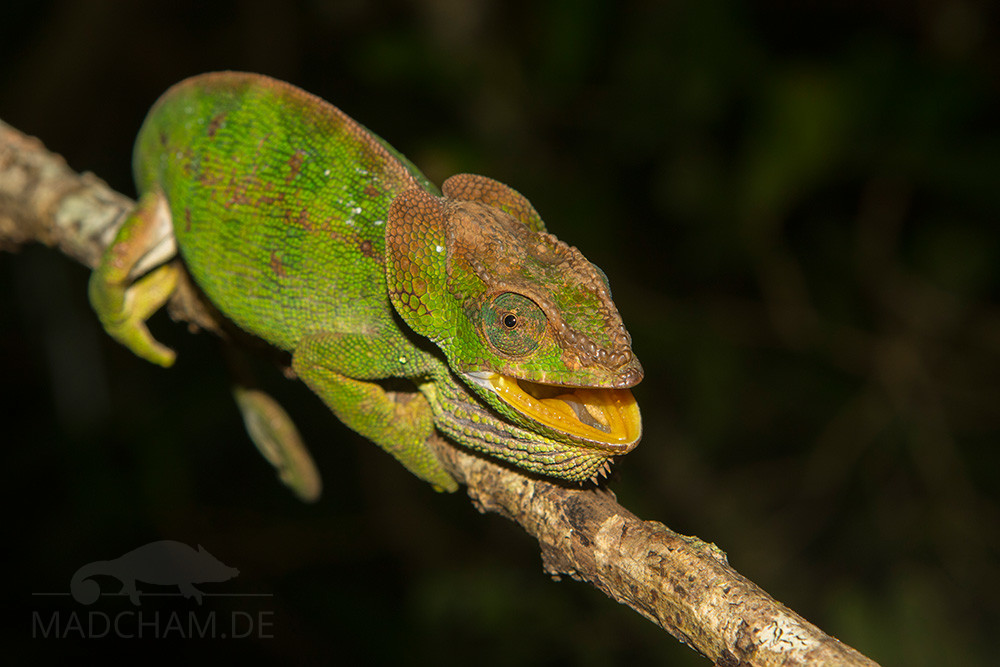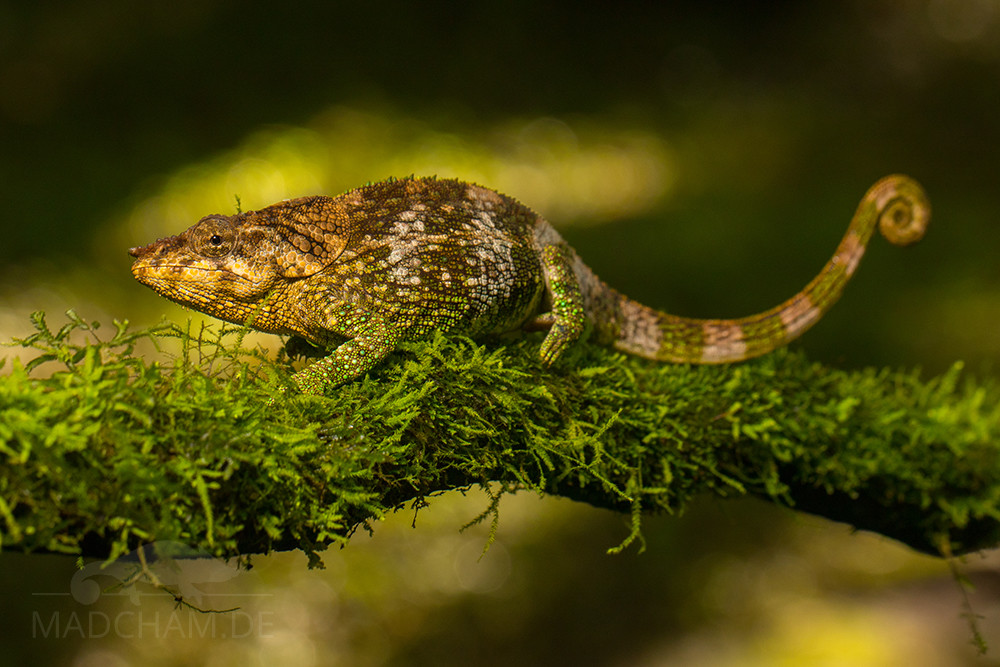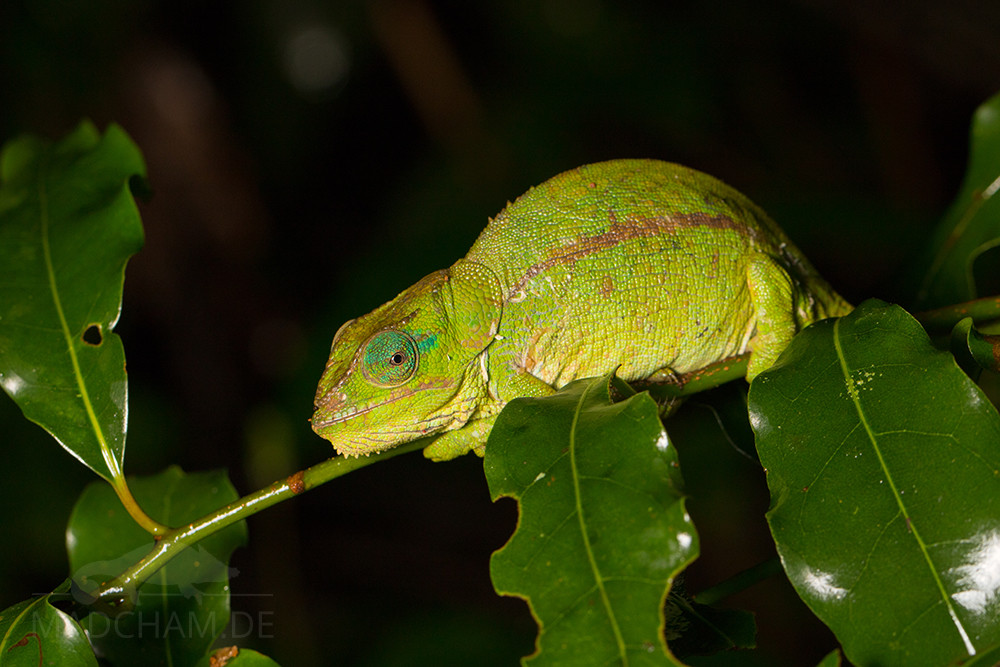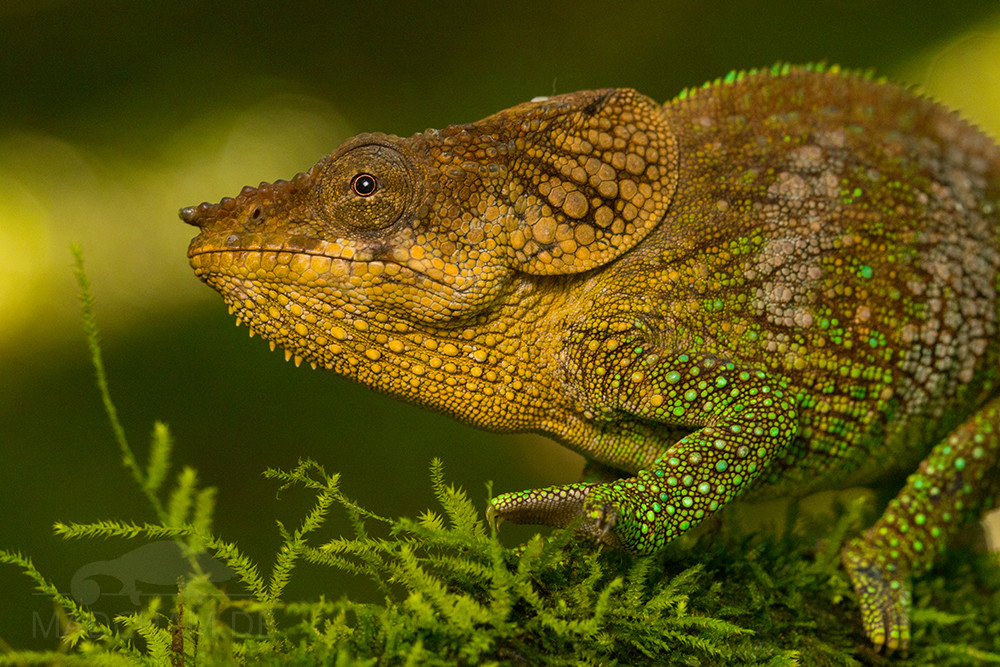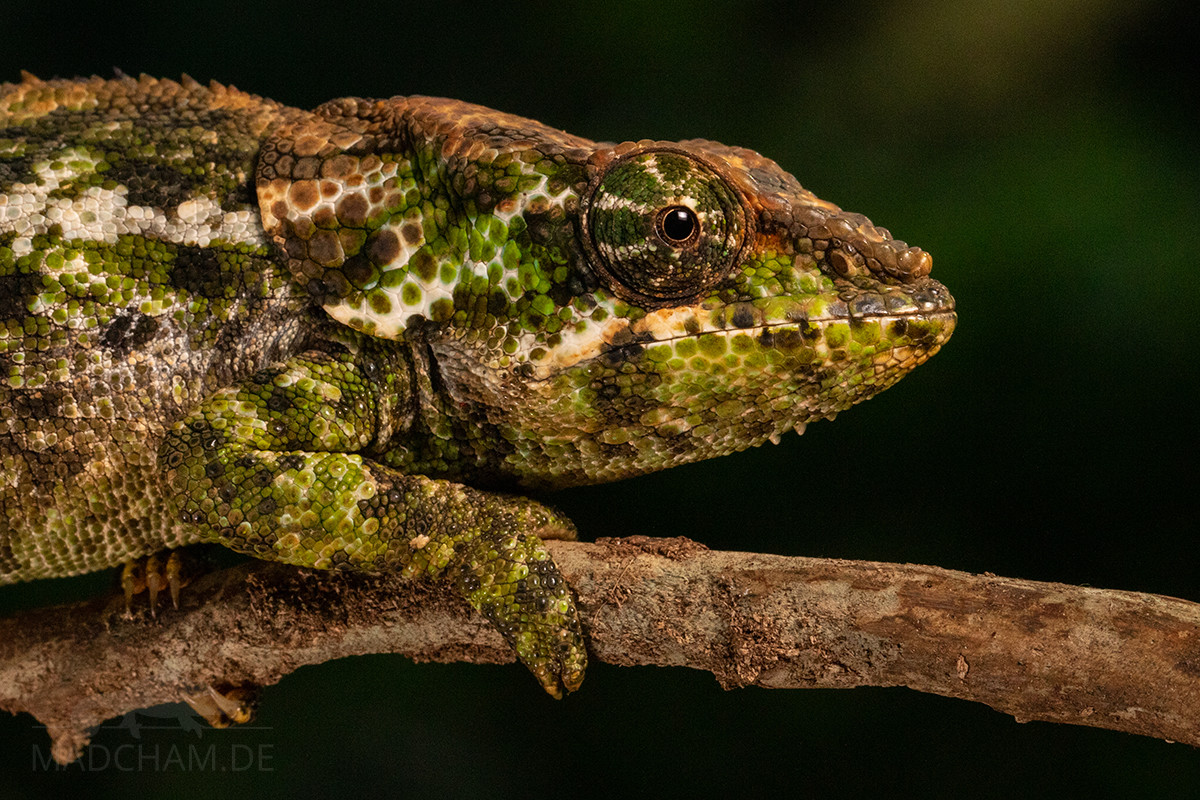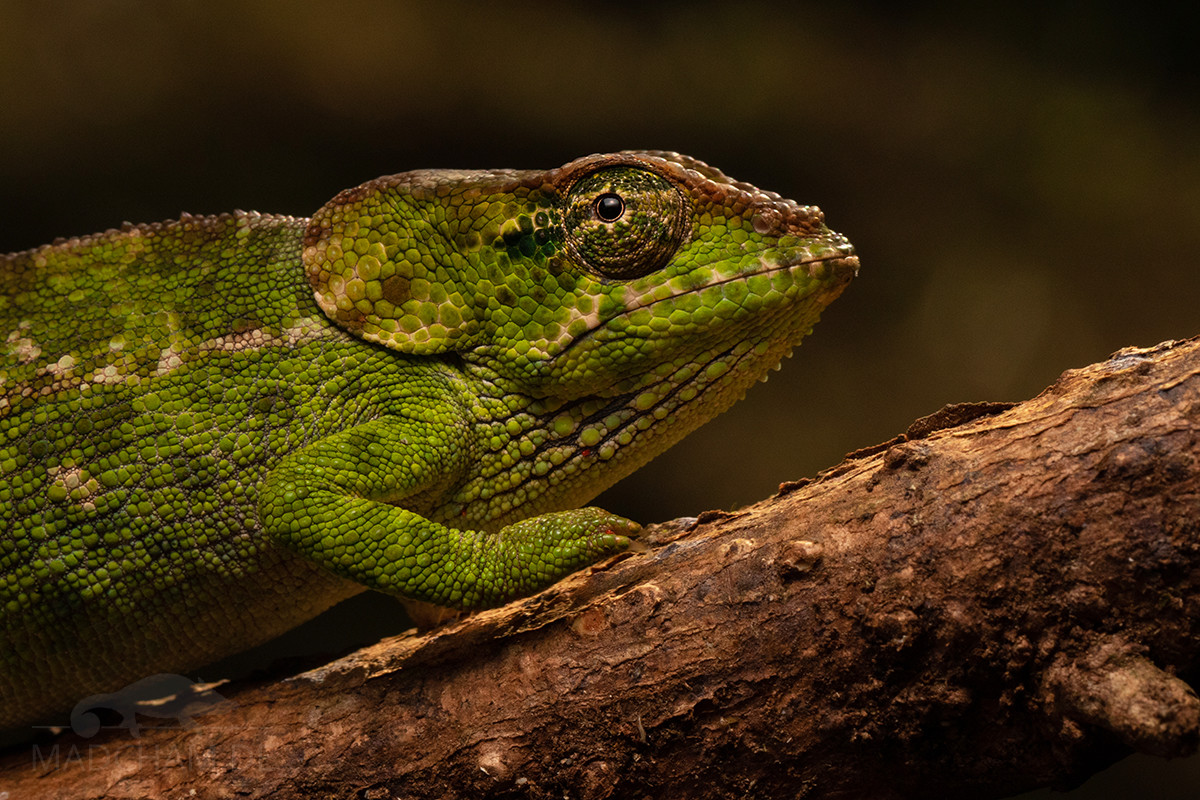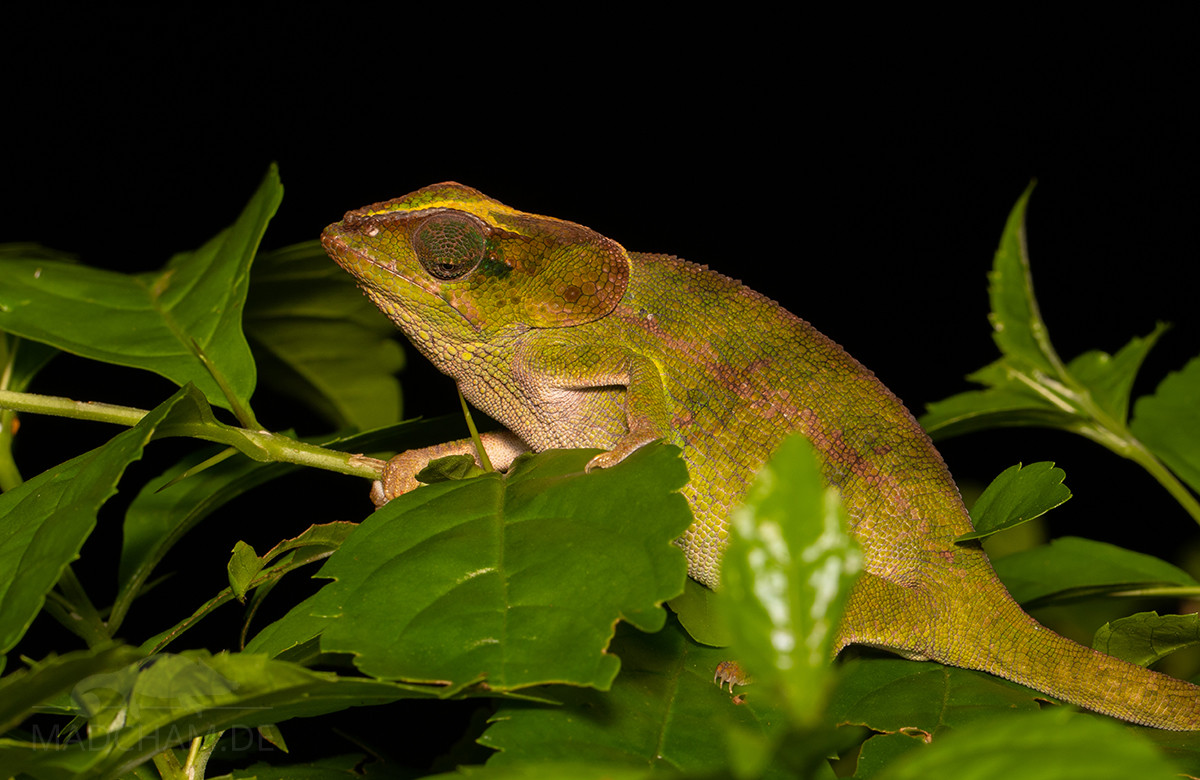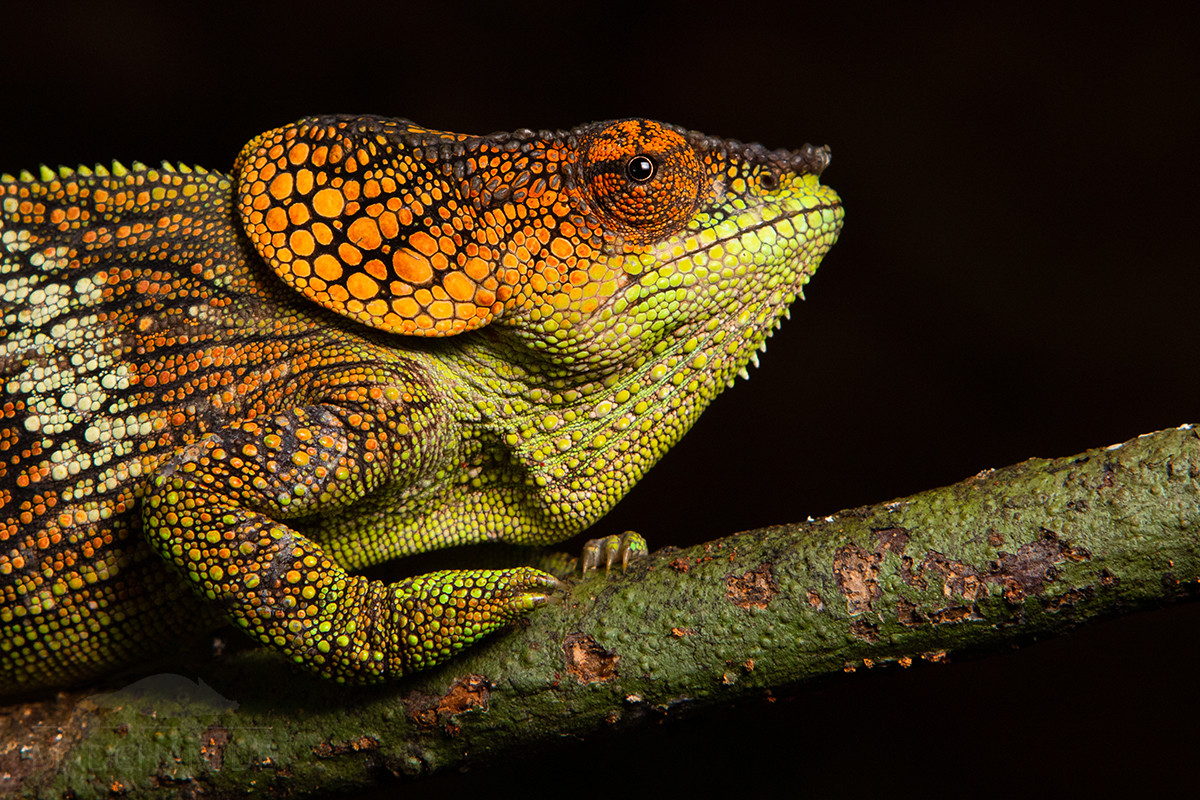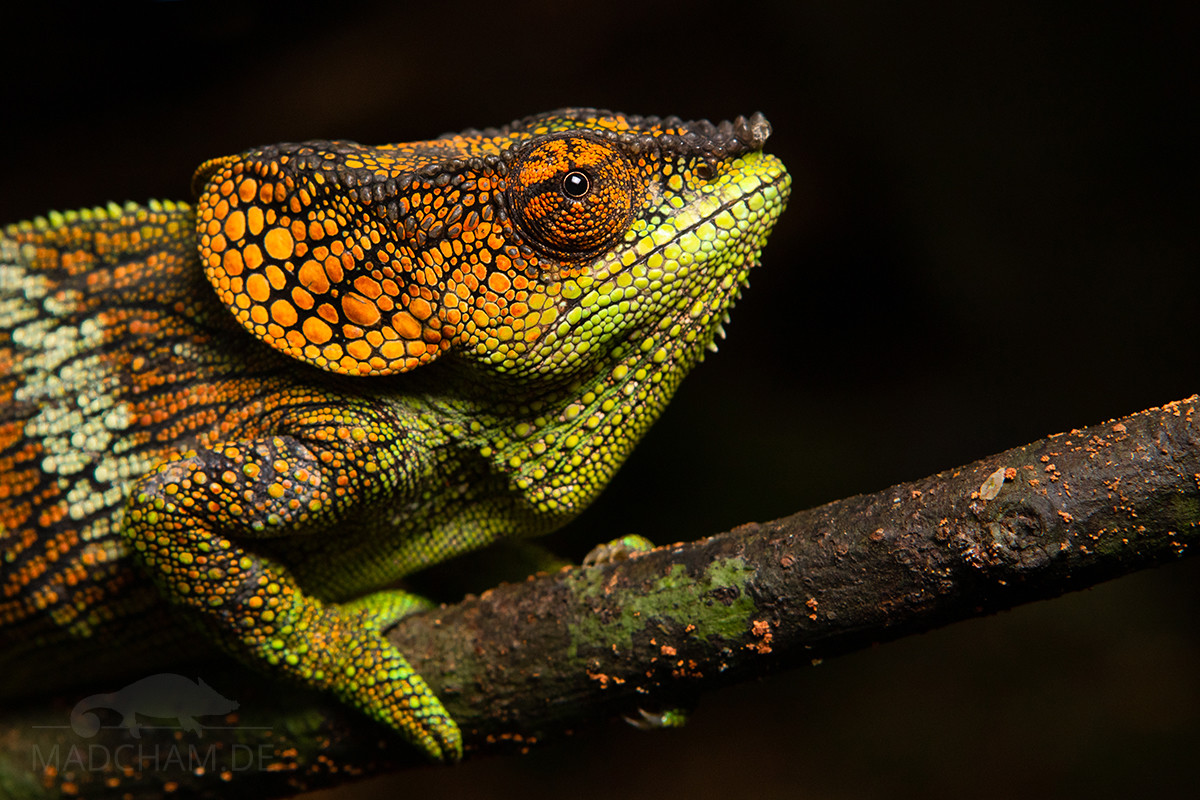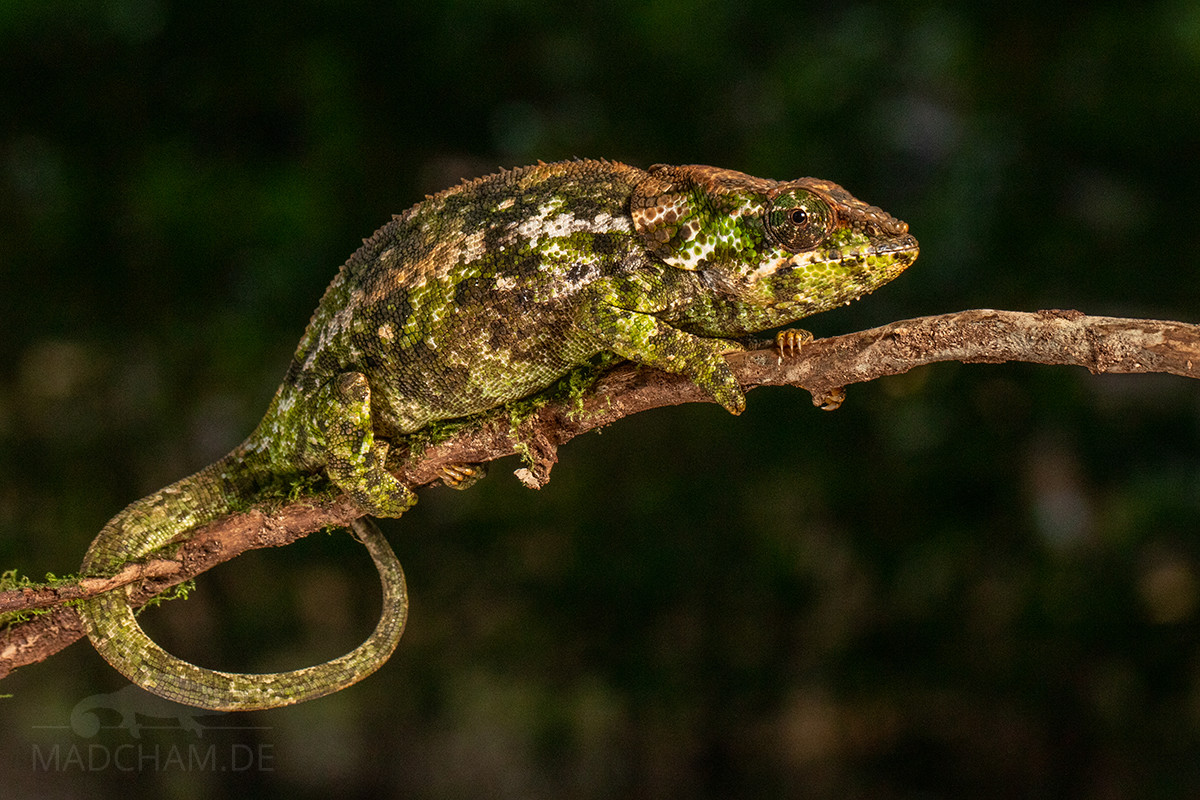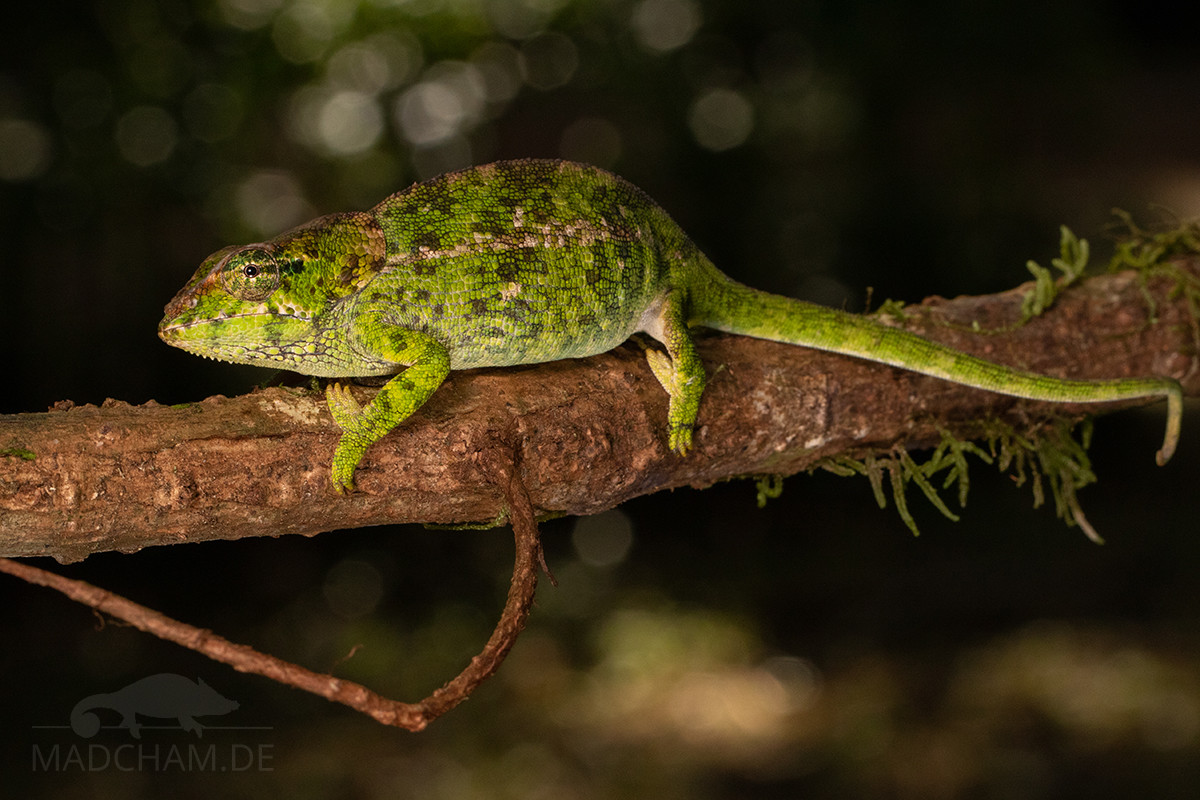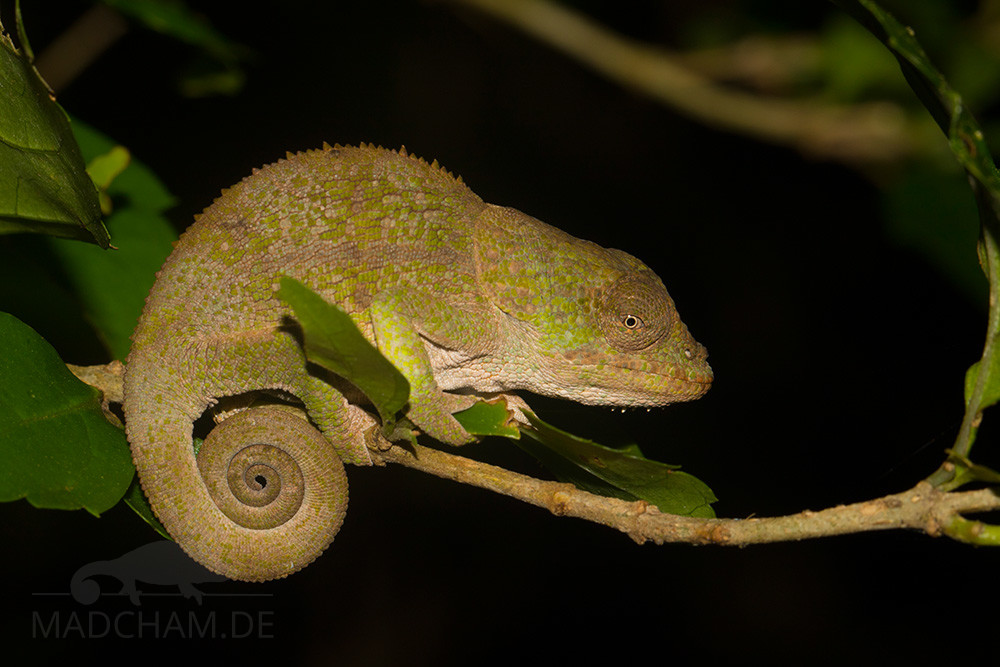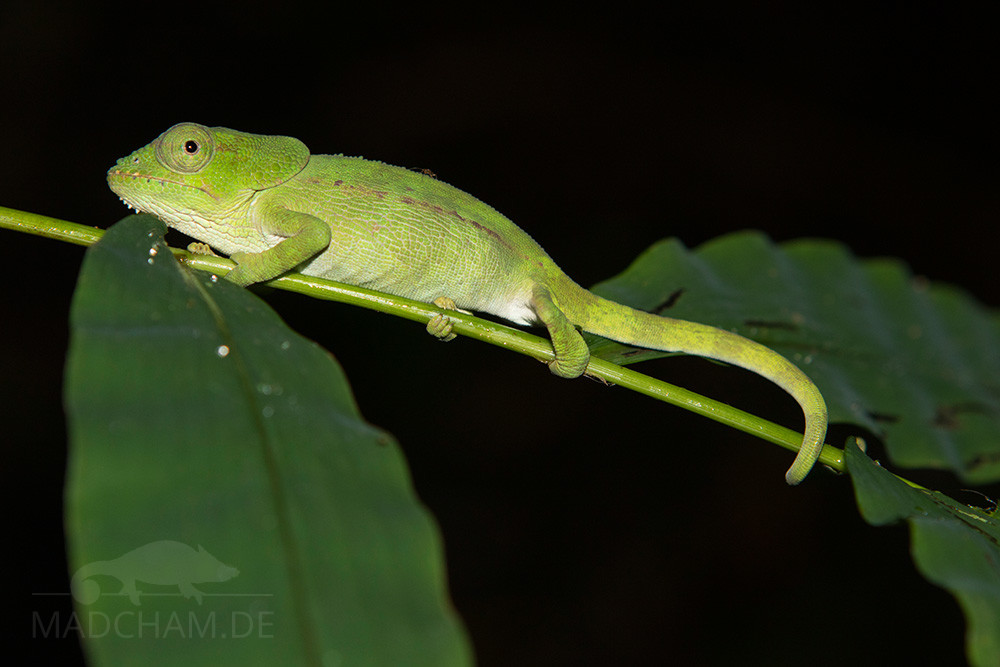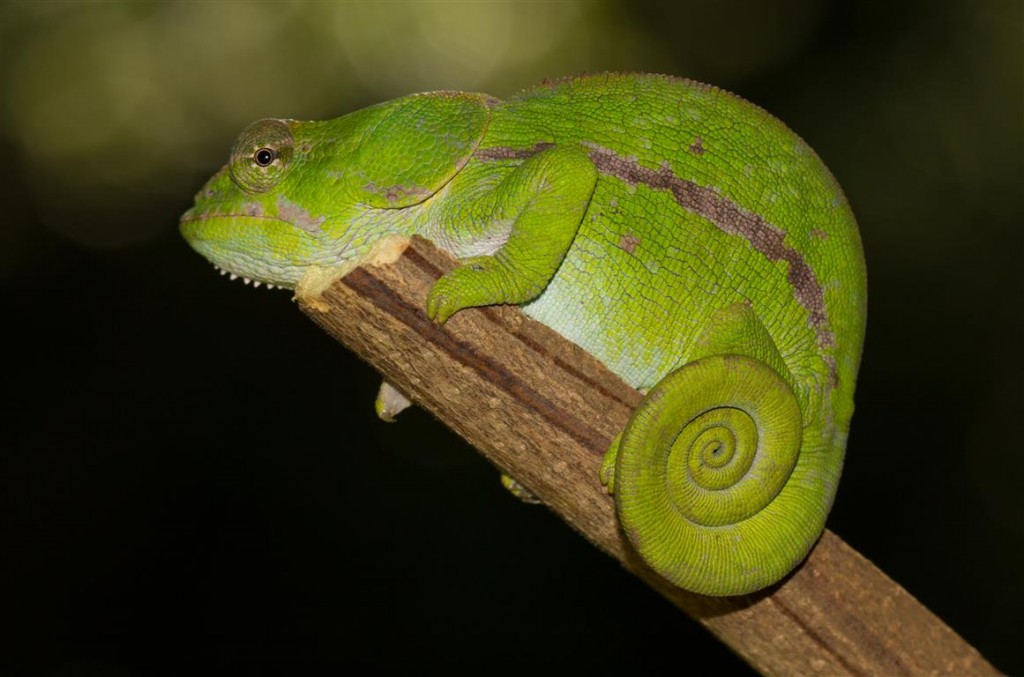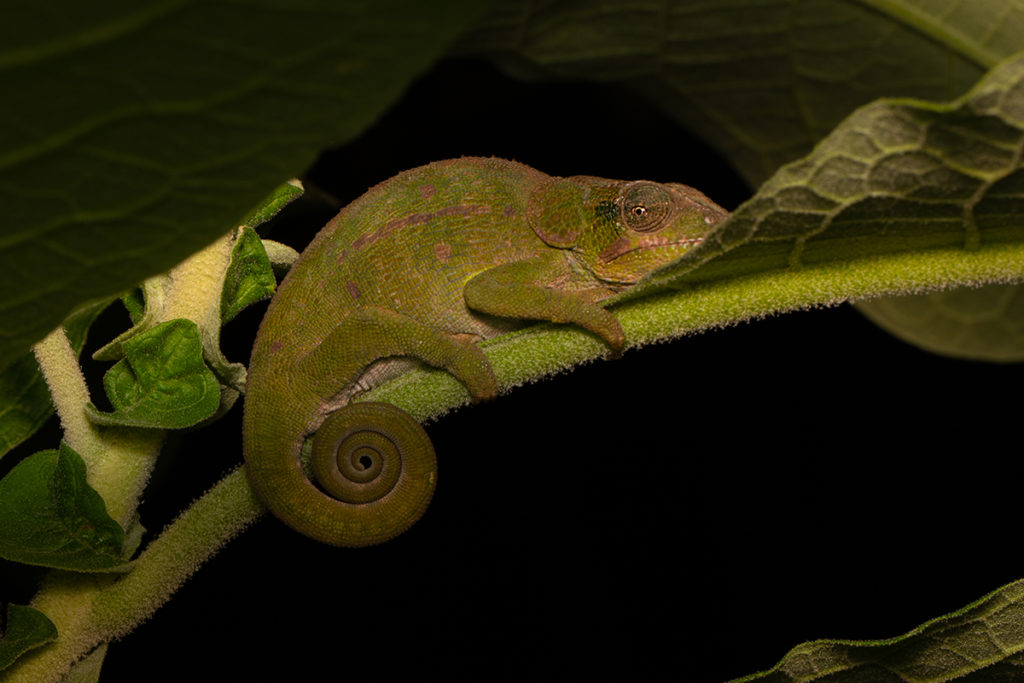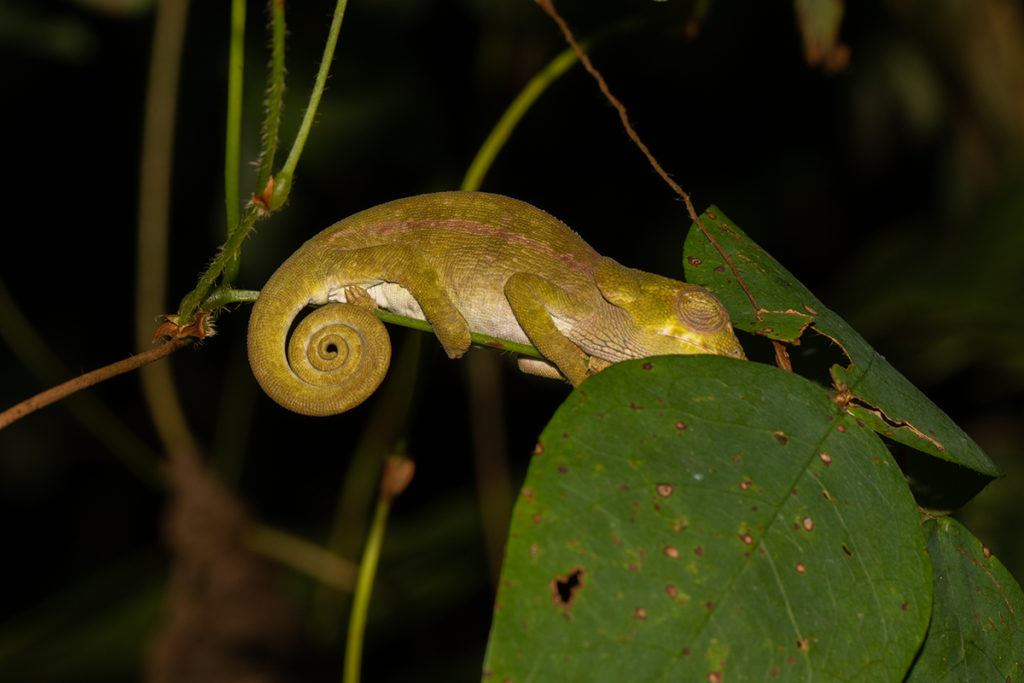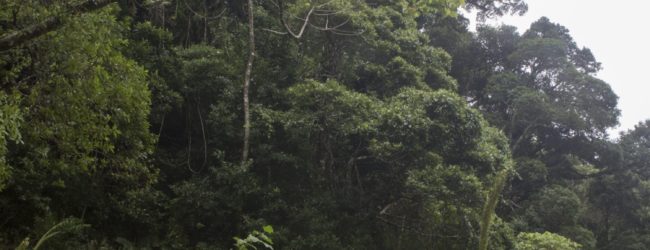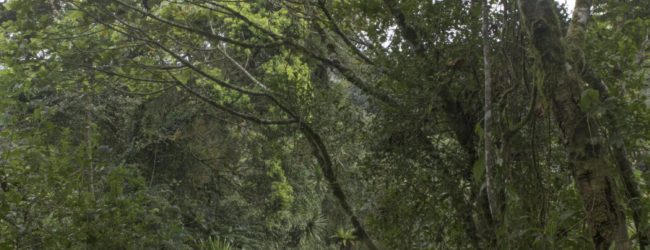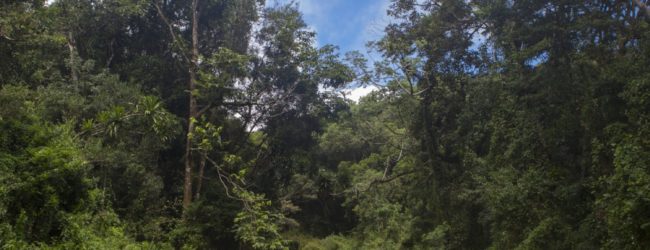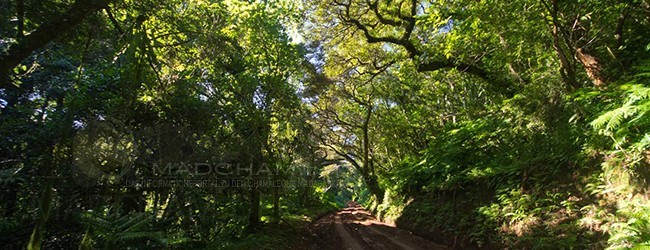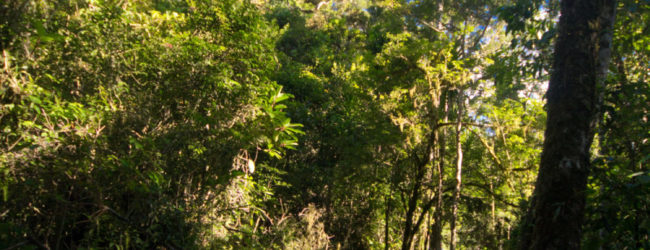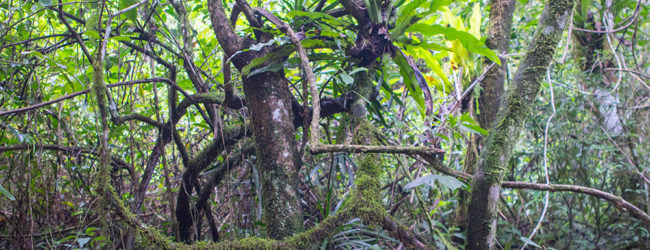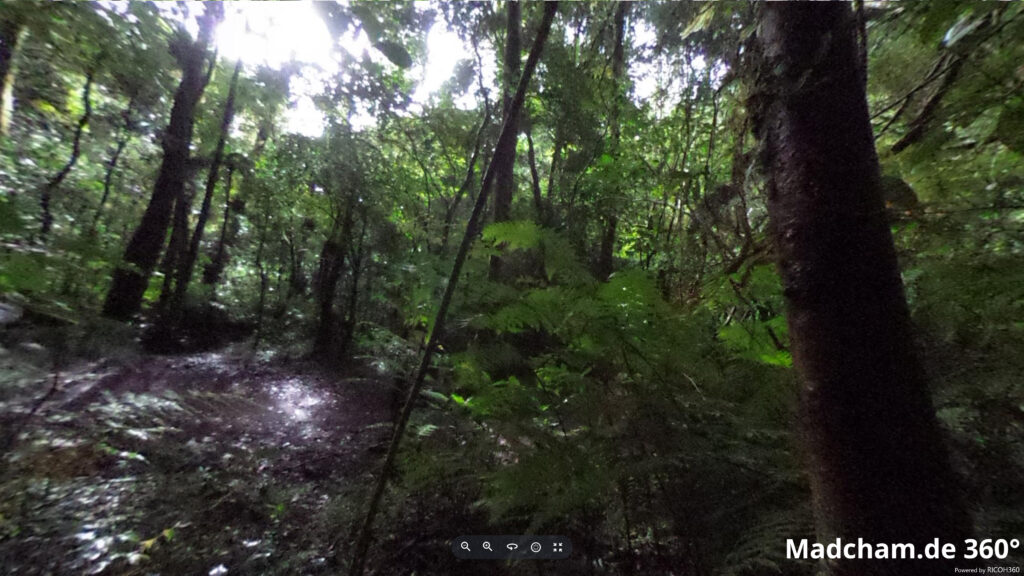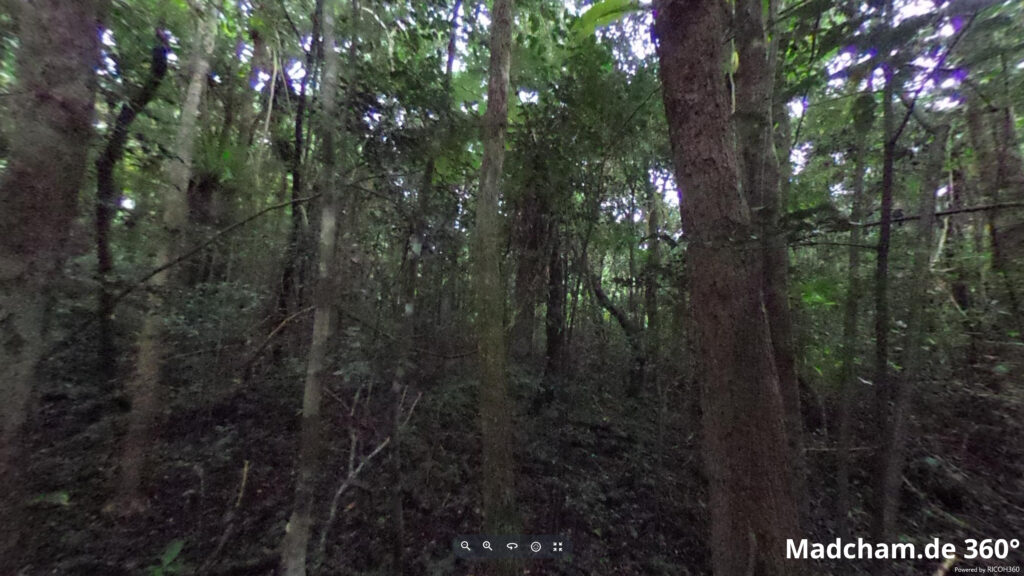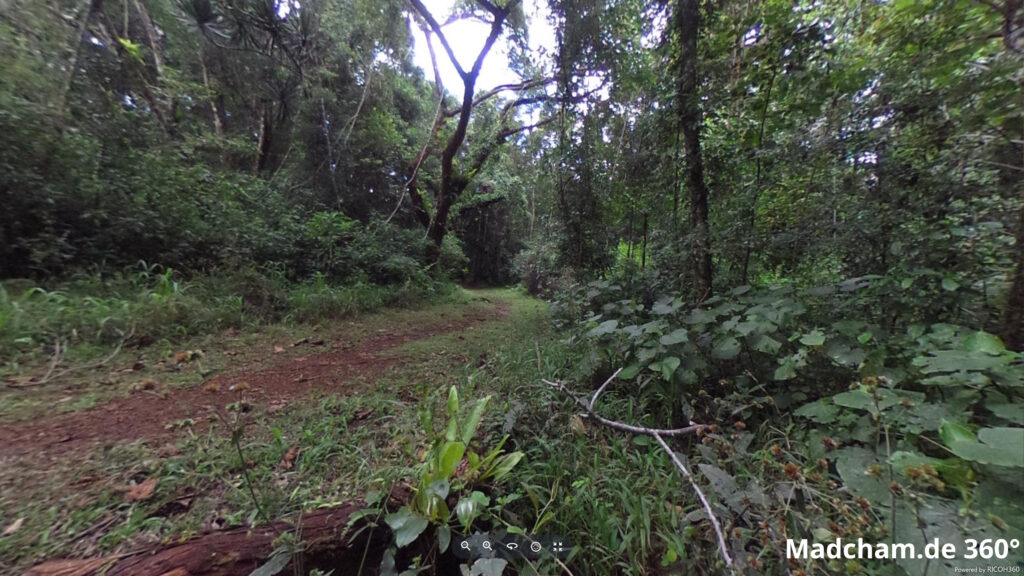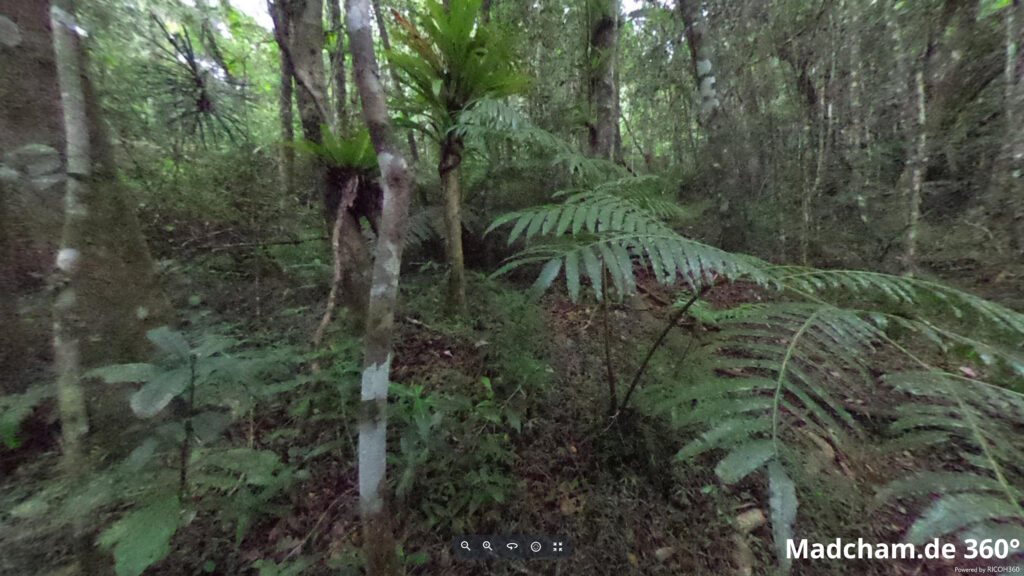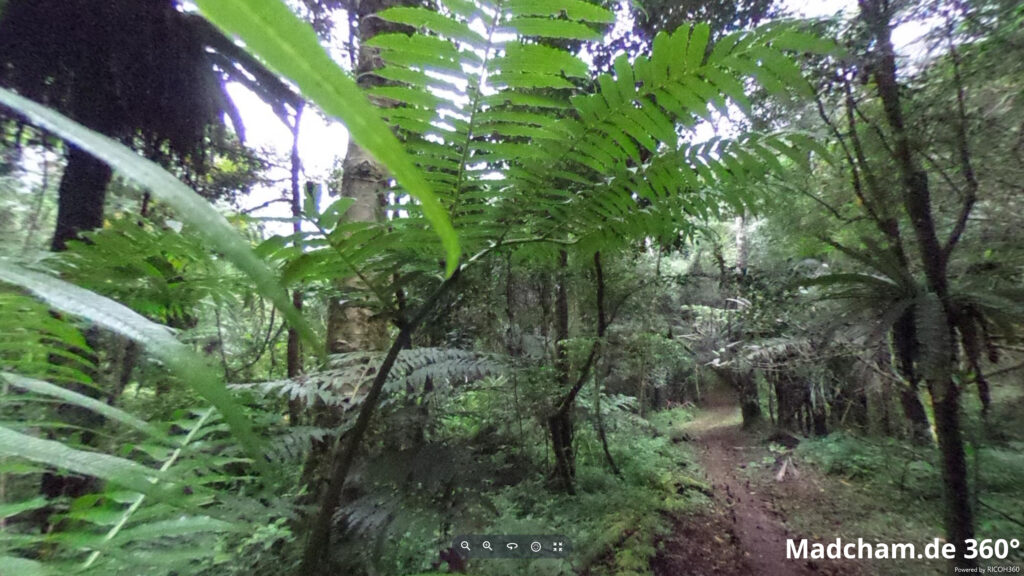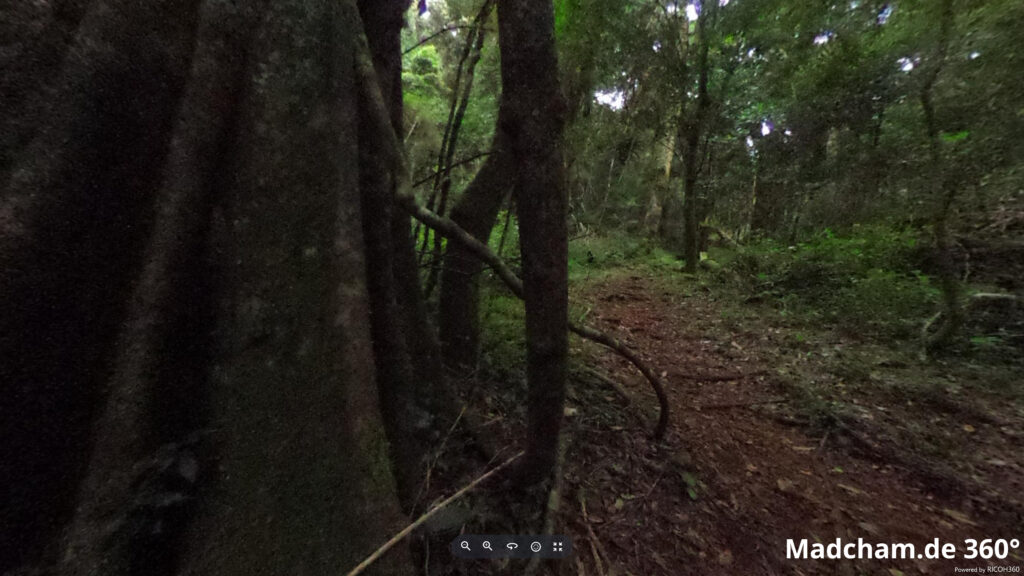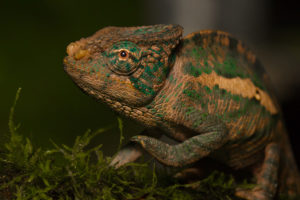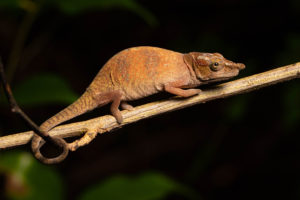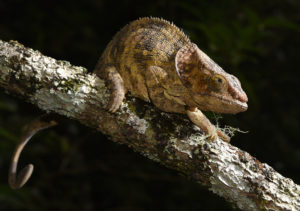no legal export possible
First description: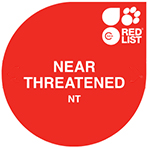
Origin of the species name:
Christopher J. Raxworthy from the American Museum of Natural History, New York (USA) and Ronald A. Nussbaum from the University of Michigan, Ann Arbor (USA), named this chameleon species mainly after its origin, the Amber Mountains. They also found the English word amber matched the color of the occipital lobes of the males of the species.
Distribution:
Calumma amber is, as the name already suggests, an inhabitant of the evergreen mountain rainforests of Amber Mountain. You can only find them at elevations of 1000-1300 meters above sea level. At all circuits of the national park, we could often find them at head height. In the evening, they are easy to find with a torch at the end of branches around the campground. However, they are not particularly picky about their preferred vegetation. We have also discovered animals of this species in the hedge of the campground or directly behind the toilet hut.
Appearance and size:
This chameleon species belongs to the larger chameleons with a total length of about 35 cm. Coloration is a lush green or white with a slightly distinct moss green banding which intensifies in stressy situations. The females show an enormous amount of marbling of lighter and darker green. Young chameleons of this species are mostly bright green with white marks. Calumma amber has large occipital lobes that can brace like elephant ears to look more impressive. In males, nose appendages are well developed and flat, females have only very small noses. Courting males show bright orange occipital lobes and broad alternating orange and light blue banding on the body . The following pictures show some young specimens.
Good to know:
Until 2006, Calumma amber was counted among Calumma brevicorne due to high similarity but was then described as an own species.
Weight table
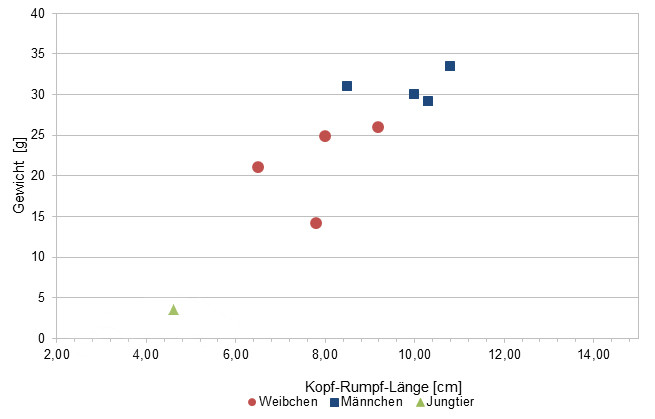
Since 2022, we have been measuring the weights of Calumma amber we found on Madagascar, as far as the animals (and our scales) cooperate. So far, there are only a few weights, but in the long term we hope to be able to read off an average weight in relation to the head-torso length (measured from the tip of the nose to the cloaca) from as many measurements as possible. It is important to know that all weights were measured towards the end of the rainy season (= best food supply), so they are probably maximum weights in Madagascar. Triangular symbols on females mean not pregnant, round symbols mean pregnant.
Gewicht = weight; Kopf-Rumpf-Länge = snout vent length, Weibchen = female, Männchen = male, Jungtier = juvenile
| Jan | Feb | Mar | Apr | May | Jun | Jul | Aug | Sep | Oct | Nov | Dec | |
| Average temperature | 23 | 23 | 24 | 23 | 22 | 21 | 20 | 20 | 21 | 22 | 23 | 23 |
| Minimum temperature | 19 | 19 | 19 | 19 | 18 | 16 | 15 | 15 | 16 | 17 | 18 | 19 |
| Maximum temperature | 28 | 28 | 28 | 28 | 27 | 26 | 25 | 25 | 26 | 27 | 28 | 28 |
| Rain days | 20 | 20 | 17 | 9 | 6 | 6 | 7 | 6 | 5 | 6 | 7 | 14 |
We have collected the data given above over several years with thermometers and hygrometers at the finding places of the chameleons. "Average temperature" means that values of a whole month have been calculated to one average value per month. For example all measured minimum temperature values of February have been calculated to one average minimum temperature for February. In plain language, this means single peak values of a day may be a little higher or lower than the average minimum and maximum temperatures. It is possible that a location has an average maximum temperature of 29°C, but one day during that month it had 33°C or even 35°C there.
Amber Mountain is an evergreen rainforest which extends over a mountain massif of volcanic origin at elevations between 850 and 1450 m. Due to the height, nights can become rather cold with temperature drops to 10°C.
During rainy season, day temperatures rise to 28°C, in sunny places even warmer. But the average temperature is a little lower. During rainy season, it rains every day for several hours. Simply the way it is in a rainforest. 😉 But also dry season has regular precipitation, just a little shorter. Climate in Amber Mountain is very humid all year long. During dry season, temperatures are somewhat lower with day temperatures up to 25°C.
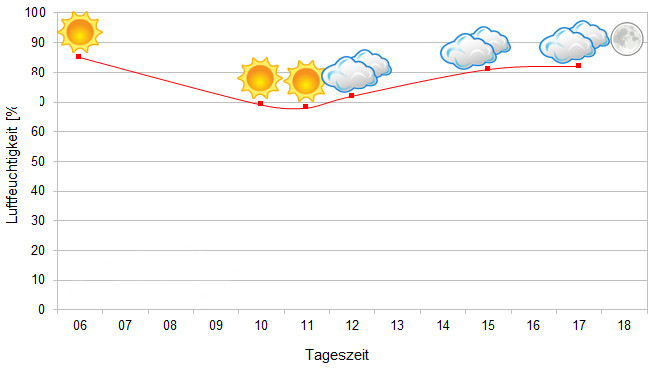
We have measured UVB data with a Solarmeter 6.5 in spring (end of April) at the peak of activity of chameleons in Madagascar. We always measured the values that a chameleon could maximally reach in its habitat.
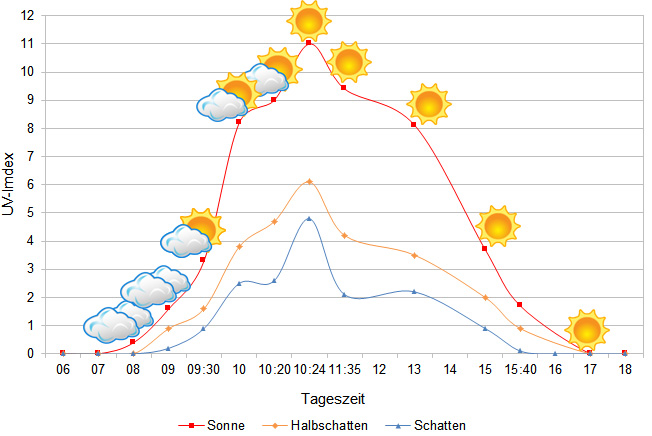
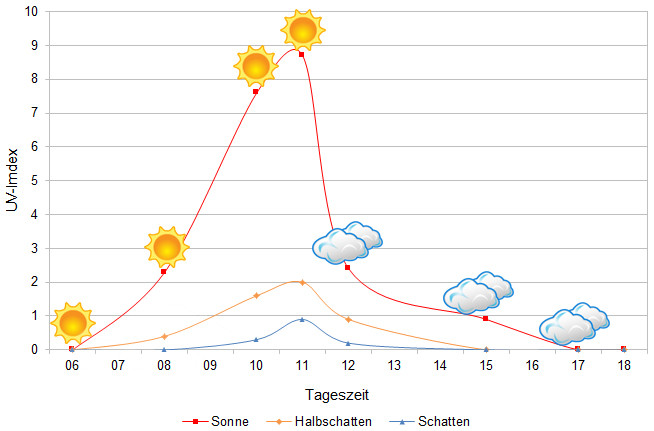
Since 2022, in addition to other climate data, we have also been measuring air pressure at the locations we visit in Madagascar. The following data is from a day during the rainy season. On the X-axis is the time of day or night. In Madagascar, the day begins around 6 am, and night falls as early as 6 pm. The Y-axis shows the atmospheric pressure in hPa.
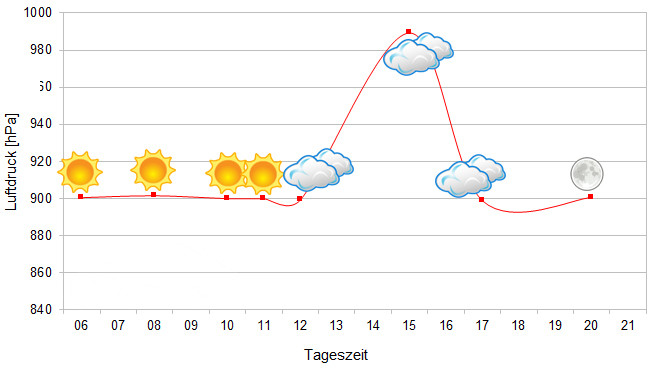
Habitat:
The following pictures show the habitat of Calumma amber in Amber Mountain. Some are even from finding places of this species. Amber Mountain is an impressing rainforest full of giant trees with huge, meters broad nest ferns. Everything is full of lianas, moss, and lichens. Calumma amber usually climbs on slender branches and prefers shrubs and bushes instead of giant trees.
Below you will find some 360° images of the Amber Mountain rainforest that we took during the rainy season. If you click on the respective image, the pictures will open in an enlarged view in a separate window. You can use the mouse to rotate in all directions. You also have the option of running the images in full-screen mode. Have fun looking at them!


